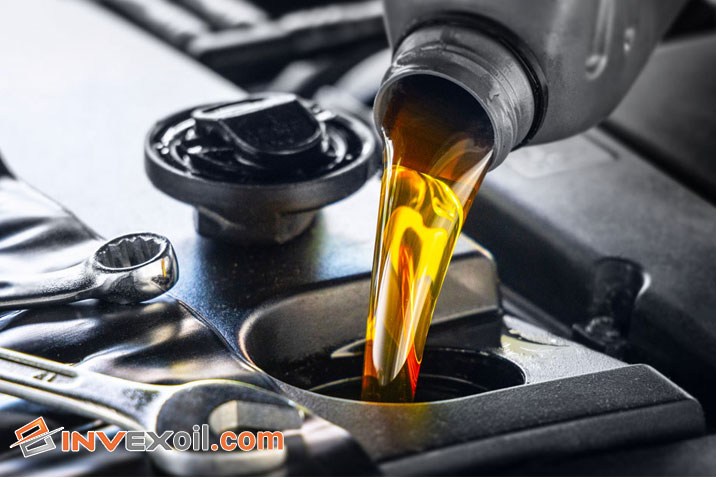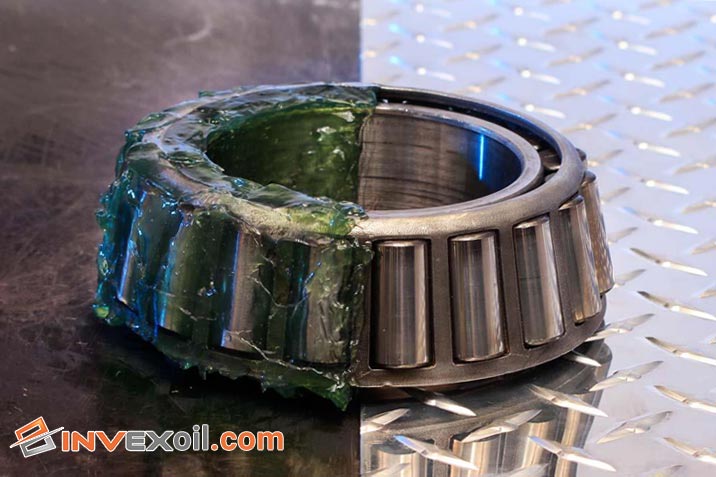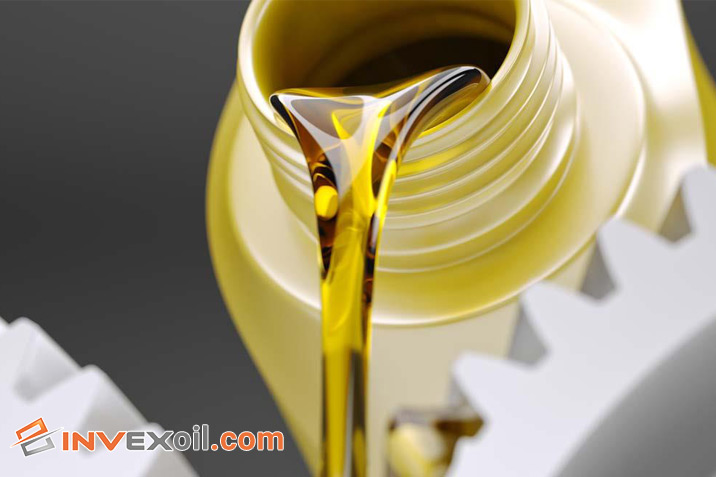Understanding the answer of What are the different types of lubrication is crucial for various applications, including the efficient functioning of machinery and equipment. Among these lubricants, one important type is transformer oil. Transformer oil serves as a vital lubricant and coolant in electrical transformers, ensuring their optimal performance and longevity. However, over time, transformer oil can degrade due to contaminants and aging. This is where a transformer oil regeneration system comes into play.
By utilizing advanced processes, the regeneration system helps restore the properties of transformer oil, extending its lifespan and enhancing its performance.
Table of Contents
What are the different types of lubrication Importance?
Proper lubrication is crucial for the smooth operation and longevity of machinery. Without adequate lubrication, moving parts can experience excessive friction, leading to increased wear and tear. Lubricants act as a protective barrier, reducing friction between surfaces and preventing direct metal-to-metal contact. By minimizing friction, lubrication helps to minimize heat generation, which can contribute to component failure. Additionally, lubricants assist in preventing corrosion and removing contaminants from the system, ensuring optimal performance. Understanding the importance of lubrication is essential for maintaining the efficiency and reliability of machinery.
Why is lubrication essential for machinery?
Lubrication is vital for machinery because it provides numerous benefits. Firstly, it reduces friction between moving parts, preventing premature wear and extending the lifespan of components. Secondly, lubrication minimizes heat generated during operation, preventing overheating and potential damage. It also helps to dissipate heat away from critical areas. Furthermore, lubricants act as a protective layer, preventing corrosion and rusting of metal surfaces. Finally, lubrication aids in the removal of contaminants, such as dirt and debris, keeping the system clean and functioning optimally. This part can help us to understand better answer of What are the different types of lubrication?
The role of lubrication in reducing friction and wear
Lubrication plays a crucial role in reducing friction and wear between moving parts. When surfaces come into contact, friction occurs, leading to heat generation and wear. By introducing a lubricant, a thin film is created between the surfaces, effectively separating them and reducing friction. This film of lubricant provides a protective layer that minimizes direct metal-to-metal contact, preventing wear and tear. By lubricating machinery, you can significantly reduce friction-related problems and extend the lifespan of the equipment. Now we are closer to answer of What are the different types of lubrication?
3 Types of Lubricants
There are various types of lubricants available for different applications. One of the broad classifications is liquid lubricants. Liquid lubricants, such as mineral oil, synthetic oil, and biodegradable lubricants, offer unique advantages and considerations.
1. Liquid Lubricants
Liquid lubricants, such as oils, are widely used in machinery. Mineral oil, derived from petroleum, is a common lubricant due to its good lubricating properties and wide availability. Synthetic oils, on the other hand, are artificially produced and offer superior performance characteristics, including high-temperature stability and longer service life. Biodegradable lubricants are environmentally friendly alternatives that break down naturally, reducing their impact on the environment. Each type of liquid lubricant has its advantages and considerations, and choosing the right one depends on the specific application requirements. With this new information, what is your idea about What are the different types of lubrication?
| Properties | Mineral Oil | Synthetic Oil | Biodegradable Lubricants |
| Lubricating Ability | Good | Excellent | Varies |
| Temperature Stability | Moderate | High | Varies |
| Service Life | Average | Long | Varies |
| Environmental Impact | High | Low | Low |
Mineral Oil Lubricants
Mineral oil lubricants, including different types of lubrication such as mineral oil-based lubricants, offer effective lubrication, reducing friction and wear. They are widely available and have moderate temperature stability. While not as advanced as synthetic oils or eco-friendly as biodegradable lubricants, mineral oil lubricants remain reliable for various industries. What are the different types of lubrication, and how do mineral oil lubricants fit into the picture of “What are the different types of lubrication”?
Synthetic Oil Lubricants
Synthetic oil lubricants, a part of the various types of lubrication, excel in high temperatures and provide superior performance. With longer service life and advanced additives, they reduce friction, protect against wear, and ensure optimal performance. Preferred for demanding applications, synthetic oils offer extended equipment life and enhanced reliability. What sets synthetic oil lubricants apart from other types of lubrication, and how do they contribute to the understanding of “What are the different types of lubrication”?
Biodegradable Lubricants
Biodegradable lubricants, a category within the different types of lubrication, are eco-friendly alternatives. They naturally break down over time, minimizing environmental impact. Derived from renewable resources, such as vegetable oils, they have lower toxicity levels, ensuring user and ecosystem safety. While lubricating properties may vary, biodegradable lubricants offer sustainable solutions for environmentally conscious applications. How do biodegradable lubricants contribute to the diverse range of lubrication options available, and how do they relate to the topic of “What are the different types of lubrication”?
2. Solid Lubricants
Solid lubricants, an important segment of different types of lubrication, offer unique advantages in certain applications where liquid lubricants are not suitable. These lubricants are in a solid-state and typically come in the form of powders or coatings. They provide excellent lubrication by forming a protective layer on surfaces, reducing friction and wear. Solid lubricants, including graphite lubricants, molybdenum disulfide (MoS2) lubricants, and PTFE (Teflon) lubricants, are three common types of solid lubricants. How do solid lubricants differ from liquid lubricants, and what are the specific benefits offered by graphite, MoS2, and PTFE lubricants in the context of “What are the different types of lubrication”?
| Properties | Graphite | Molybdenum Disulfide | PTFE (Teflon) |
| Lubricating Ability | Excellent | Excellent | Excellent |
| Temperature Stability | High | High | High |
| Anti-Wear Properties | Good | Excellent | Good |
| Chemical Resistance | Moderate | Good | Excellent |
Graphite Lubricants
Graphite lubricants are solid lubricants that consist of finely powdered graphite. They have excellent lubricating properties, even under high temperatures and extreme pressures. Graphite forms a slippery film between surfaces, reducing friction and preventing direct metal-to-metal contact. It is commonly used in applications such as locks, hinges, and high-temperature machinery.
Molybdenum Disulfide (MoS2) Lubricants
Molybdenum disulfide (MoS2) lubricants are solid lubricants that contain microscopic particles of molybdenum disulfide. These lubricants have exceptional anti-friction and anti-wear properties. The particles adhere to surfaces, forming a low-shear protective layer that reduces friction and prevents surface damage. MoS2 lubricants are commonly used in automotive components, industrial equipment, and high-load applications.
PTFE (Teflon) Lubricants
PTFE (polytetrafluoroethylene), commonly known as Teflon, is a solid lubricant that offers excellent lubricating properties. It has a low coefficient of friction, providing smooth and efficient operation. PTFE lubricants are known for their resistance to heat, chemicals, and moisture. They are widely used in various industries, including automotive, aerospace, and food processing.
3. Gaseous Lubricants
Gaseous lubricants are a unique category of lubricants that rely on gases to reduce friction and provide lubrication. Unlike liquid or solid lubricants, gaseous lubricants use the properties of gases to create a thin film between moving surfaces. This film acts as a barrier, preventing direct metal-to-metal contact and reducing friction. Gaseous lubricants are commonly used in specialized applications where traditional lubricants may not be suitable.
| Properties | Air | Hydrogen | Carbon Dioxide |
| Lubricating Ability | Moderate | Good | Good |
| Temperature Range | Wide | Wide | Moderate |
| Environmental Impact | Low | Low | Low |
| Application Range | General | High-temperature | High-temperature |
Air Lubrication
Air lubrication involves using compressed air or a controlled flow of air to create a thin layer of air between surfaces. This technique reduces friction and improves efficiency in various applications, such as pneumatic systems, air bearings, and some machining processes. Air lubrication is a cost-effective and environmentally friendly option, as it eliminates the need for traditional lubricants.
Hydrogen Lubrication
Hydrogen lubrication utilizes hydrogen gas to provide lubrication between moving surfaces. Hydrogen molecules have unique properties that allow them to act as an effective lubricant. Hydrogen lubrication is commonly used in high-temperature and high-speed applications, such as gas turbines and certain industrial processes. It offers excellent thermal stability and reduces friction and wear.
Carbon Dioxide Lubrication
Carbon dioxide lubrication involves using carbon dioxide gas as a lubricant. It is suitable for applications where traditional lubricants may fail, such as high-temperature environments or where contamination must be minimized. Carbon dioxide lubrication is commonly used in metalworking processes, where it provides effective lubrication while also acting as a coolant.
Factors to Consider different types of lubrication
When selecting a lubricant, it’s crucial to consider various factors that impact its effectiveness. These factors include operating conditions, such as temperature, pressure, and speed. Understanding these parameters will help you choose the right lubricant for your application.
| Factors | Considerations |
| Operating Conditions | Temperature, pressure, and speed |
| Application Method | Grease, oil, or solid lubricant |
| Compatibility with Materials | Metal, plastic, rubber, or other materials |
Operating Conditions
Operating conditions play a significant role in lubricant selection. Temperature affects the viscosity and performance of the lubricant. Higher temperatures often require lubricants with higher viscosity or additives to withstand the heat. Pressure influences the load-bearing capacity and film thickness of the lubricant. Higher pressures necessitate lubricants with excellent anti-wear properties. Speed impacts the lubricant’s ability to form a stable film and maintain proper lubrication. Understanding “What are the different types of lubrication” helps in assessing lubricant suitability for various operating conditions.
Temperature
Temperature directly affects the viscosity and stability of lubricants. Operating in extreme temperature ranges requires choosing lubricants specifically formulated for those conditions. Cold temperatures may cause the lubricant to thicken and become less effective, while high temperatures can lead to lubricant breakdown and decreased performance. Exploring “What are the different types of lubrication” provides insights into selecting temperature-resistant lubricants.
Pressure
Operating under high-pressure conditions demands lubricants with excellent load-bearing properties. They should form a strong lubricating film to prevent metal-to-metal contact and minimize friction, wear, and damage. Considering “What are the different types of lubrication” guides the selection of lubricants suitable for varying pressure conditions.
Speed
Speed influences the formation and maintenance of the lubricating film. High speeds can cause lubricant sling-off and inadequate lubrication, while low speeds may result in boundary lubrication conditions. Choosing a lubricant suitable for the operating speed ensures optimal lubrication and protection. Understanding “What are the different types of lubrication” helps in assessing lubricant compatibility with different speeds.
Conclusion
By exploring various lubrication techniques and systems, such as manual, centralized, and automatic lubrication, readers can enhance equipment maintenance practices. We highlighted the significance of viscosity and the role of additives, including anti-wear agents, extreme pressure components, and corrosion inhibitors, in lubricants. Moreover, we delved into specific automatic lubrication systems like mist lubrication, oil circulation, and grease lubrication. By understanding the nuances of each method, businesses can optimize equipment performance, extend component longevity, and minimize operational disruptions. To expand your lubrication knowledge, remember the key phrase “What are the different types of lubrication” and consult industry experts for tailored guidance.
FAQ
These questions are the most commonly asked about the topic “What are the different types of lubrication.” Here are the answers:
What are the main types of lubrication?
The main types of lubrication include liquid lubrication (oil-based), solid lubrication (grease-based), and gas lubrication (air or gas-based).
How do liquid lubricants work?
Liquid lubricants form a thin film between moving surfaces, reducing friction and wear. They can be further classified into mineral oils, synthetic oils, and semi-synthetic oils.
What are the advantages of solid lubricants?
Solid lubricants, such as grease, offer advantages like longer-lasting lubrication, improved sealing properties, and resistance to contaminants. They are commonly used in high-temperature or high-pressure applications.

Hello, This is Matteo Hudson Copywriter from InvexOil. We are here to provide super-important content to help you learn more easily and be involved in the world of Petroleum and Chemistry. We are here to answer your questions, help you to have better services, and also find the best solution for your problems. Don’t be shy and ask your questions in the comment box or call our number. If you want to connect with me directly, you can search for my name on Linkedin.






